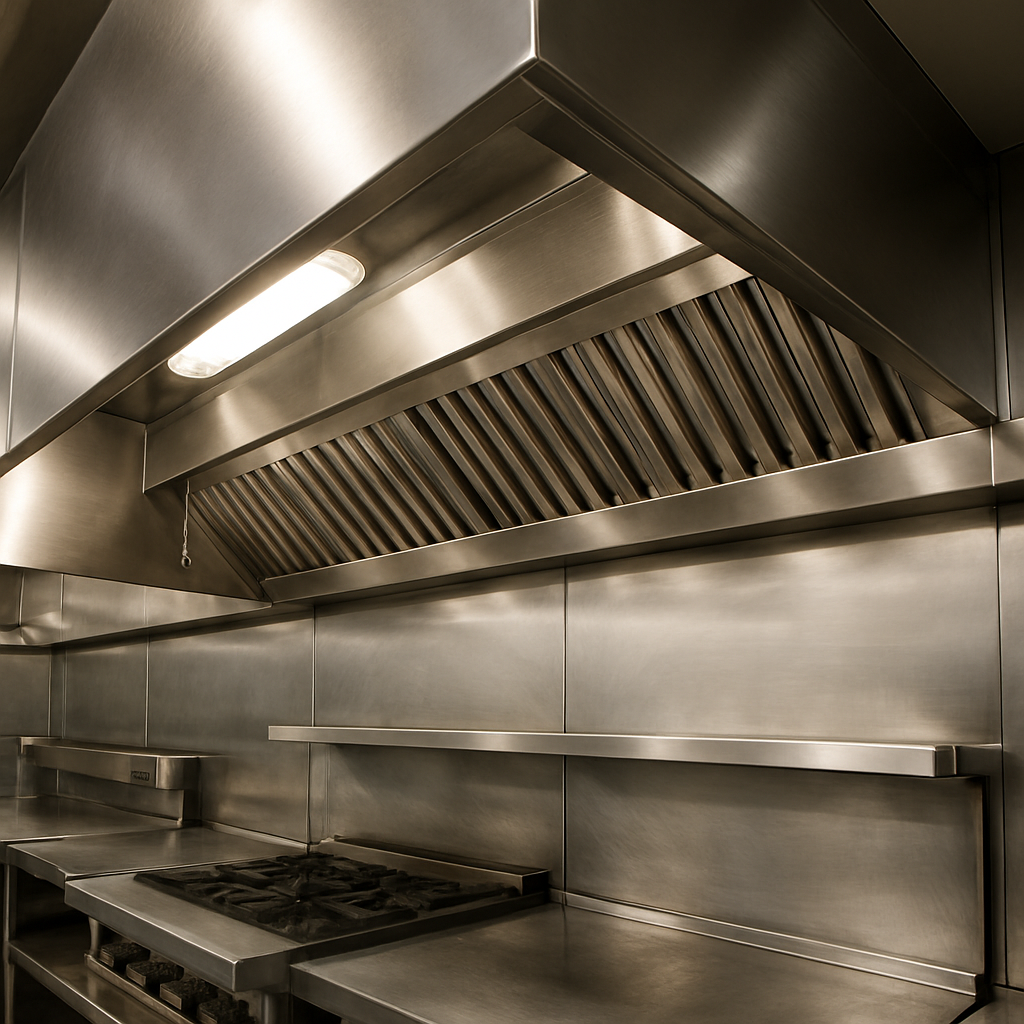In any commercial kitchen, ventilation isn’t just a matter of comfort—it’s a matter of safety, code compliance, and operational efficiency. One of the most overlooked but critical components of a kitchen ventilation system is the plenum. If you’re designing, installing, or managing a commercial kitchen, understanding what a plenum is and why it matters can save you from costly mistakes.
What Is a Kitchen Hood Plenum?
A plenum is the chamber or enclosed space within a kitchen exhaust hood that collects and directs the air (and smoke, grease, heat, etc.) to the ductwork. Think of it as the transition zone between the open air of the kitchen and the exhaust system that leads out of the building. It manages the flow and distribution of air to ensure efficient removal of contaminants.
Plenums come in two main types:
-
Exhaust Plenums – Collect and channel greasy, hot air from cooking surfaces into the duct system.
-
Supply/Make-Up Air Plenums – Deliver fresh air into the hood or space to replace the exhausted air.
Why Plenums Matter
1. Fire Safety
Commercial cooking produces grease-laden vapors. If not properly captured and contained, these vapors can build up in ducts and ignite. The plenum helps trap these vapors close to the hood filters, reducing fire risk and allowing easier cleaning and maintenance.
2. Code Compliance
Local and national fire and building codes (like NFPA 96 in the U.S.) have strict requirements for commercial kitchen ventilation. Proper plenum design—including accessible cleanouts, grease containment, and construction materials—plays a big role in meeting these standards.
3. Airflow Efficiency
Without a plenum, air can flow unevenly, leading to hotspots in the kitchen, smoke leaks, or backdrafts. A well-designed plenum balances airflow, maximizing the effectiveness of both the exhaust and make-up air systems.
4. Noise Reduction
By smoothing the transition of airflow between the hood and ducts, plenums help reduce the noise of rushing air and fan vibration. That means a quieter kitchen—better for staff and customers alike.
Design Considerations
When choosing or designing a hood with a plenum, here’s what you need to factor in:
-
Size and Capacity – Match the plenum size to the cooking load and hood volume. Too small, and it chokes airflow. Too large, and you waste space and energy.
-
Access for Cleaning – Grease will collect in the plenum. Access panels are a must for safe, effective maintenance.
-
Material – Stainless steel is standard because it’s durable, fire-resistant, and easy to clean.
-
Integration – The plenum must work in tandem with your filters, ducting, and fan system. Treat it as part of a whole—not a bolt-on component.
Final Thoughts
Plenums aren’t flashy. They don’t get much attention compared to fans or hood styles. But they’re essential. If you want a kitchen that’s compliant, safe, and built to last, your hood’s plenum is not the place to cut corners. Work with professionals who understand the airflow science and fire codes, and make sure your system is designed to handle the real demands of a commercial kitchen.
Need help figuring out the right hood and plenum setup for your space? Reach out—we’ll break it down, no guesswork.

